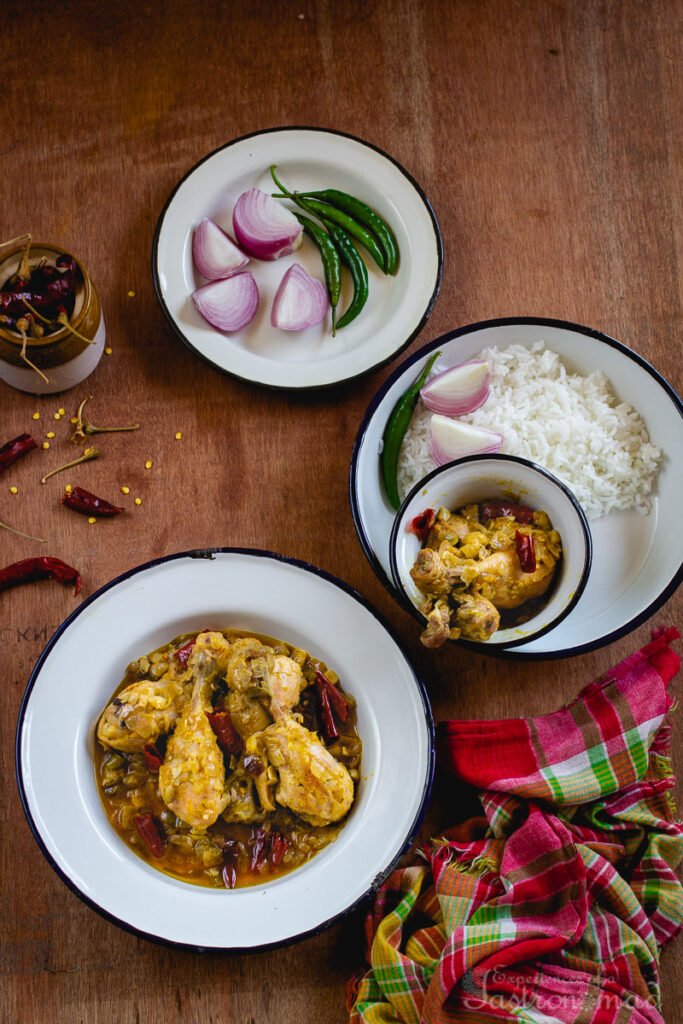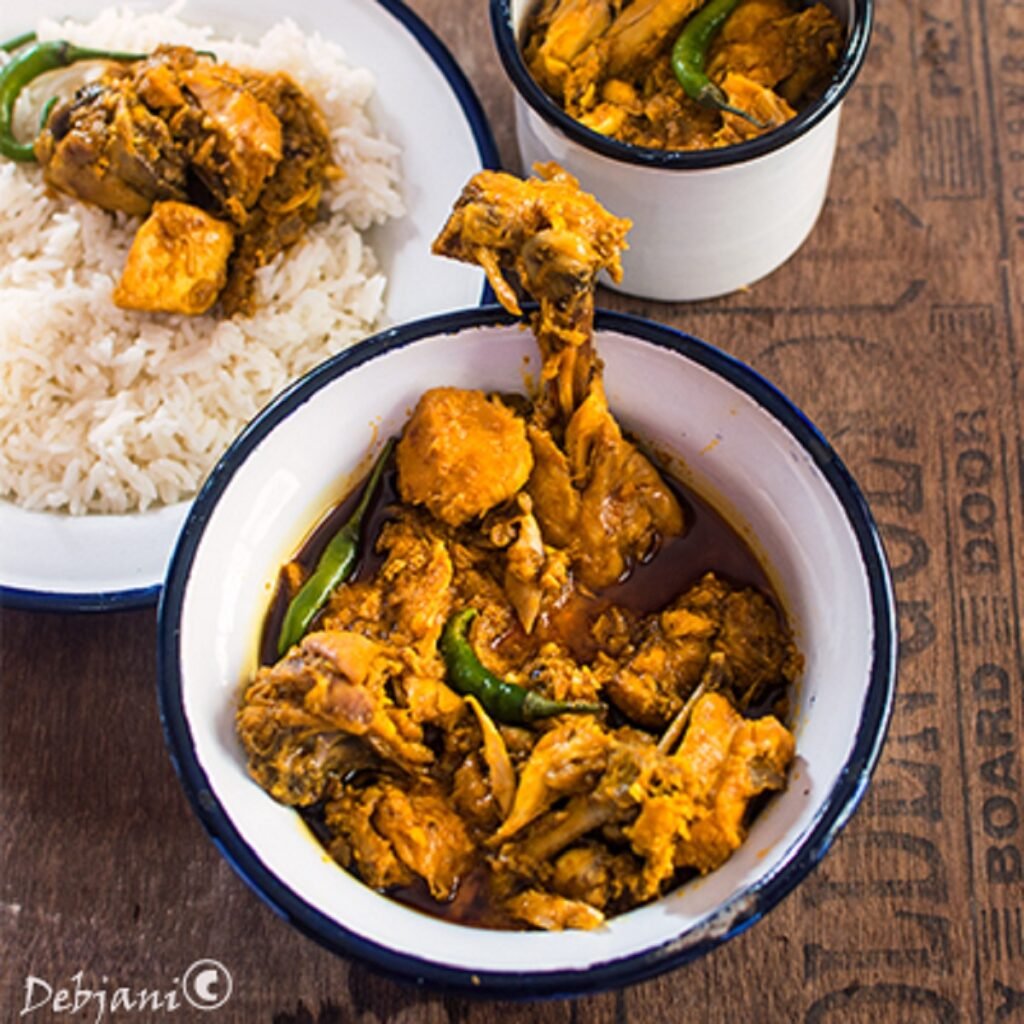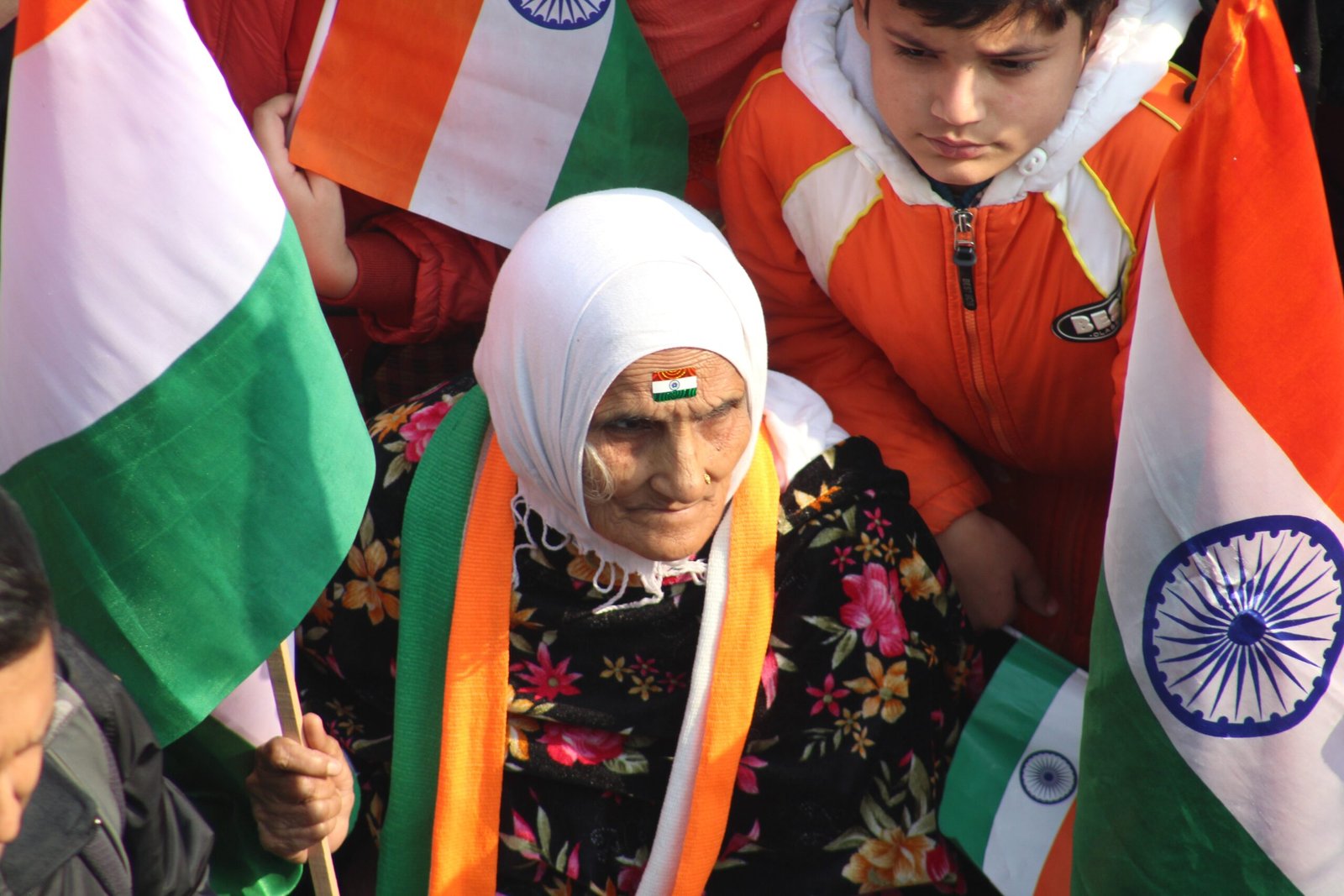Culinary delights of India leave its own inscription on history. Annexed by several invaders across boundaries and borders, Indian cuisine has over the centuries become somewhat a melting pot.
The Bengal delta is no exception.
Lying on the eastern coast of the country, the region has contributed substantially to the sub-continent’s cuisine.
While Bengali cuisine elsewhere continues to be identified with steamed rice and fish curry, and the quintessential rosogolla—there’s much more to the gastronomic fare of the Bengal delta including some rare delicacies like the Goalando Steamer Fowl Curry
What is the Goalando Steamer Fowl Curry? What makes it special and is the recipe still available? Well let’s take a look
History and Folklore
This dish was Originally, prepared by boatmen aboard steamers plying from Calcutta to Dhaka during the late 19th and early 20th century, (now capital of Bangladesh) or other major ports within the Bengal presidency
§ Time: Circa late 1860s
§ Region: Undivided Bengal
With British rule at its peak, Calcutta (now Kolkata) and Dhaka—two main centres had started transforming into bustling metropolises along with rural agrarian small towns slowly graduating into cities.
The Industrial Revolution had begun metamorphosing British lives within the Indian subcontinent, which would further leave behind indelible impressions in the country’s culture including cuisine.
§ Circa early 1870s
§ Enter the railways
As economic activities received a shot in the arm owing to the railways (Eastern Bengal Railways), it also stirred up a sleepy hamlet of Goalando, now somewhere – probably partially submerged in the vast Bengal delta. Goalando is where the Padma meets the Brahmaputra. Needless, to say owing to its strategic location, the port became a significant point of contact for activities carrying cargo as well as passenger ship. It is from this sleepy hamlet that the unique chicken curry derived its name – Goalondou Steamer Fowl Curry. Goanlondou Ghat and steamer because the dish was cooked by the boatmen during their overnight journey by steamer.
Necessity is the mother of invention and this adage is aptly applicable with regards to the Goalondou Steamer Fowl curry. Whatever limited ingredients were available in the kitchen during those times, in a steamer all through the journey, made way to this dish. While the exact authentic recipe remains somewhat diluted, spices such as dry red chili and bulbous vegetables like onions, garlic were used with a dash of pungent-smelling mustard oil; it was often cooked in an earthen pot on slow flame, which enhanced the taste.
From the late 19th century, those travelling to East Bengal, Assam or Burma took the steamer (the one carrying passengers) from Goalondo, a small station at the confluence of the Padma and the Brahmaputra, where the Eastern Bengal Express from Sealdah terminated. The Goalondo steamer then travelled up to Narayanganj in Dhaka and from there people moved ahead to Syllhet or Chittagong or further on into Burma on the one side or to the tea gardens of Assam on the other.

Now the overnight steamer journey from Goalando to Narayanganj was rather toilsome. With the insurmountable Padma clubbed with the boatman’s haunting melancholic tunes (bhatiyali gaan) were enough to instill an eerie feeling; while the boatman’s lambent lantern acted as a beacon amidst the amethystine darkness. The khalasi in a somewhat makeshift kitchen concocted up a chicken curry with very basic ingredients, which was fiery yet had a special flavour. Of course, the country chicken made a huge difference in its lip-smacking taste.
It is believed that it was usually the Muslim khalasis were the inventor of this dish, since in those days chicken as a meat was a big no-no in Hindu Bengali households. Of course, with time it has changed.
Later Research and Mention in Literature
With time, the delicacy came to be known as the Goalando Chicken curry or Steamer Chicken curry. Noted journalist, food historian and culinary critic Pritha Sen has drafted a beautiful narrative about this dish. Her research reveals that the once immensely popular Goaluando Steamer curry made its way to Bengali literature. Famous Bengali writer and scholar Syed Mujtaba Ali, perhaps the earliest food writer from undivided Bengal often mentioned about a murgir jhol (chicken curry) being served at the steamers heading towards Narayanganj.
In fact, in one of his musings, Ali rues “I am amazed that the young girl from Bikrampur (the women of Bikrampur were reputed to be the finest cooks in all of Bengal) travels to her college hostel in Calcutta on the Goalondo steamer, dining on rice and curry on board, yet has never been able to produce the Steamer Fowl Curry cooked by the simple boatmen!”
Later on in the later 20th and early 21st century, Shawkat Osman, Dhaka-based renowned historian and food researcher delved into history of this rustic non-vegetarian dish. In his celebrated work on the cuisine from present-day Bangladesh, titled Khunti Korai – Bangladeshi Cuisine, 2009, (Korai is kadhai or wok and khunti is spatula) referring to this rustic boatmen’s curry, he states—“It is our very own ‘Murgir Salon’ or salan cooked in every household; but in the steamers and in the many ghats across the country, small eateries cook the same with a generous helping of dry chilies.”
Even the-then publications like the Bengal Gazette, Imperial Gazeteer, old journals of forest officers and tea planters often mentioned about the fiery yet light chicken curry being served on the steamer that travelled from Goaloando till Narayanganj. One common thread that Sen found among all the literary canons, was “fiery thin red curry with oil floating on top.” Later interpolations or inventions also led to the addition of potatoes and hard-boiled eggs. However, the original one definitely had its own charm.
Revival Efforts and Preservation in Present Times
Explaining the folklore and historical account behind the legendary dish, Sen says, “No recipe can be categorised as completely lost. I believe the same is applicable for the Goalondou Steamer Fowl Curry.” She further goes on to say that communications between the two countries – India and Bangladesh were affected to some extent post-independence and eventually train services of the Bengal Eastern Railway between Calcutta and Dhaka was discontinued. Needless to say the steamer travel also met with the same fate. However, the Goalondou fowl curry continued to remain in the memories, which was preserved by the local population in their respective hensels (kitchens in traditional Bengal households).
What makes the dish so tasteful? What is the secret behind it is recipe? Commenting on the recipe of the dish, Siddhartha Bose, owner of the popular Bengali restaurant chain Bhojohori Manna, “authentic recipe of the dish might be somewhat difficult to come by, especially given the vast history of the Bengal delta spanning more than 800 years!” However, influences of various regions – especially Europeans, British and Portuguese alike, must have added to the already existing rustic flavours of the dish, he adds.

Kolkata-based well-known food writer and blogger Indrajit Lahiri says, “There is almost no authentic documented recipe for the same. But many have tried to recreate the dish using simple homely ingredients. Many recipe bloggers and home chefs have tried their hands on it and are pretty good at it, as well. But then, how can a simple chicken curry, cooked with love, go wrong?
Home chefs and food bloggers have also been preserving this dish traditional dish. Indrani Mukherjee, a Bangalore-based technical writer and a food blogger says “it is the rustic element attached to the dish and of course the extra serving of dry red chillies and mustard oil gives it a unique twist!” Mukherjee further mentions that occasionally she prepares the dish in her kitchen as her six-year-old son and husband love the rustic taste of the dish.
Very few restaurants in Kolkata serve this dish; among them Bose’s Bhojohori Manna and Aaheli by Peerless Inn are worth mentioning. However, Bose remembers to add on, that the Steamer Curry is not for the masses. It has its own niche customers.
Over time, its popularity might have faded with time, but the sleepy town of Goalondou, in Bangladesh, roughly 90 kilometres away from the capital Dhaka, still continues to remain an alive as a tourist destination albeit popular for the famous steamer fowl curry!
Source: Khunti Korai – Bangladeshi Cuisine, Osman, Shawkat; 2009
Note : Photos from Google, by Debjanir Rannaghor(https://kitchenofdebjani.com/) and Experiences of a Gastronomad (https://experiencesofagastronomad.com/)

By Sampurna Majumdar
Sampurna Majumder is a communications professional born and raised in Kolkata. Fascinated by creativity from a young age, she has a deep love for music, literature, and world cinema. An avid reader and traveler, she holds a Master’s degree in Literature from the University of Delhi.














